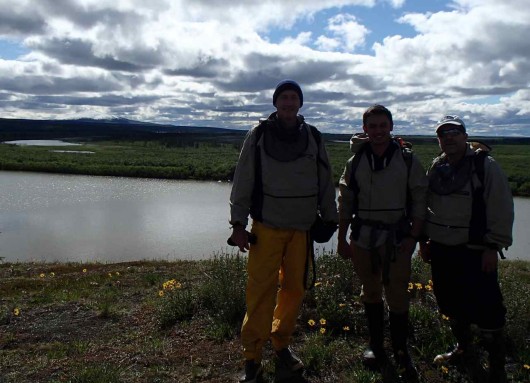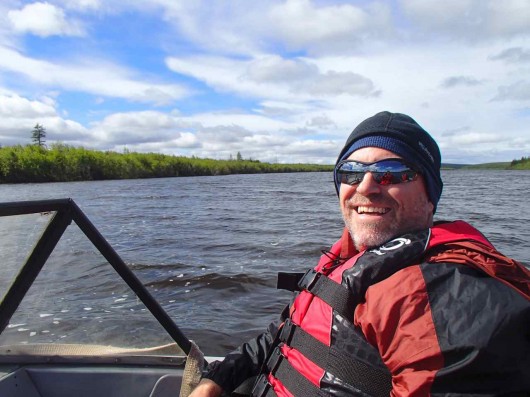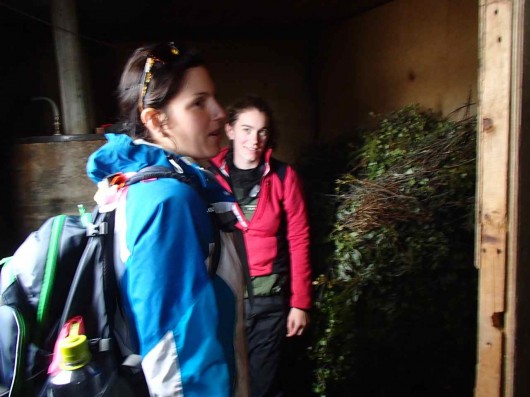(This post is by Mark Paricio, a PolarTREC teacher accompanying the Polaris Project this year.
To read all of Mark’s posts, go to: http://www.polartrec.com/expeditions/siberian-arctic-systems-study )
Today, I had the privilege of working with Dr. Heather Alexander of the University of Texas at Brownsville and her team, setting up 16 plots for an experimental burn to determine how the severity of fire in the Siberian boreal ecosystem affects the permafrost soils and the germination of larch trees after a fire.
Specifically, she looks to answer two questions: First, how does fire affect the insulating properties of the soil organic layer (which is composed of the living and the undecomposed mosses) that lies atop the permafrost soils, and second, how will changes in this moss layer affect the regrowth of the larch trees that make up the forest in this part of the Siberian Arctic.
There are two potential consequences that will result from the answers to these questions. As the larch forests regrow after fire, there may be a net gain or loss of carbon in the trees. Also, fire and forest regrowth may affect the amount of Pleistocene era carbon currently stored in permafrost soils as the depth to which the soils thaw in the summer months is heavily influenced by the soil organic layer which both insulates permafrost and is the seed bed for the larch regeneration.
Warmer Weather means More Mosquitoes!
The morning was much warmer and clearer than our previous snowy day, and we were greeted by snow-capped peaks in the distance. After breakfast, our team gathered to head out on a short hike to the area designated for the burn plots. We laughed as it appeared that most of us had on the unofficial uniform of the Northeast Science Station – bug shirts. We didn’t laugh for long.
Soon, as we were tramping through the forest to the experimental burn site, our laughter over our bug shirts transformed into quiet gratitude for having the right gear to do our science. With our shirts, the swarming bugs were only a minor disturbance.
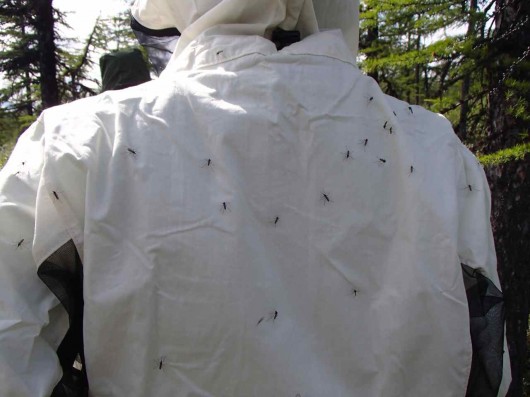
Dr. Heather Alexander’s bug shirt shows why we love our bug shirts. Most of the mosquitoes had already flown off her shirt when she turned for the picture!
Setting up the Experimental Burn Plots
In order to fully understand the effects of fire severity on forest recovery and eventually on permafrost soils, Heather’s team had to take a complete inventory of the proposed burn site as well as prepare the site for safe burning. Among numerous other measurements, her students and fellow researchers took cores from many trees to determine the last time a natural fire burned this section of the forest. They took measurements of the depth of the active layer of soil down to the permafrost. They took soil profiles to determine the depth of the vegetation and soil for each plot. Dr. Mike Loranty of Colgate University measured the resistivity of the soils in the burn plots, to help determine the moisture content, the composition, and the depth of the active layer in the experimental burn plots
I worked with Heather in marking sixteen 2-meter by 2-meter plots, each surrounded by a buffer zone while research associate Logan Berner of the Woods Hole Research Center photographed and recorded the exact GPS location of each plot.
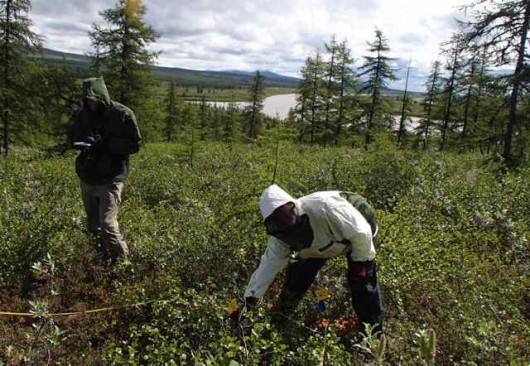
Dr. Heather Alexander places the last corner flag of Plot 15 while Logan Berner takes GPS measurements of its location.
All of this work before lunch made for a very long morning. Her team went back after lunch and spent the afternoon trimming back vegetation in the buffer zones and dead branches on nearby trees to help ensure a safe environment for the burn in two days.
A Change of Pace for my Afternoon
Rather than returning with Heather’s team after lunch, I joined Dr. Max Holmes for a tour up the Panteleikha River from “The Barge” and a lesson in water and boat safety. The Panteleikha is a beautiful river with the deep shades of tea in its virtually silt-free waters due to dissolved organic matter. This is just one of the rivers Max’s team samples in his aquatic survey.
Problem Solving at the Northeast Science Station
Field scientists must always be thinking of ways to solve problems they encounter with whatever limited resources are available. Because the severity of the experimental burns are determined by how much fuel is placed on the plot, we need a tremendous amount of dried wood from trees and shrubs to be placed on the plots. Due to a week of cold wet conditions, all of the fuel we gathered in the forest was extremely moist and needed to be dried out. So how do you dry hundreds of pounds of branches and leaves quickly? In a sauna, of course. On the rustic barge where the undergraduates stay, there is a make-shift sauna. Nakita Zimov came up with the idea of turning off the water to the sauna and using it as a great big drying oven – problem solved (and it smelled like the holidays)!
Done with Day 2 at the Northeast Science Station
After a long day, I climbed up the hill back to the Orbita, my home away from home, to begin writing my journal.
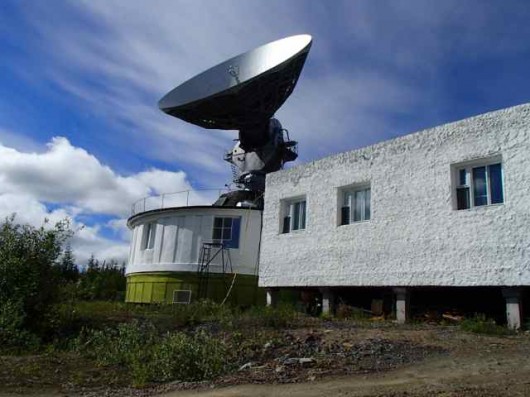
After a long day, I returned to the Orbita to write my journal. My room is the third window from the right.
I can’t believe I’ve only been here for a little more that 48 hours!
Stay curious my friends! – Mark Paricio

